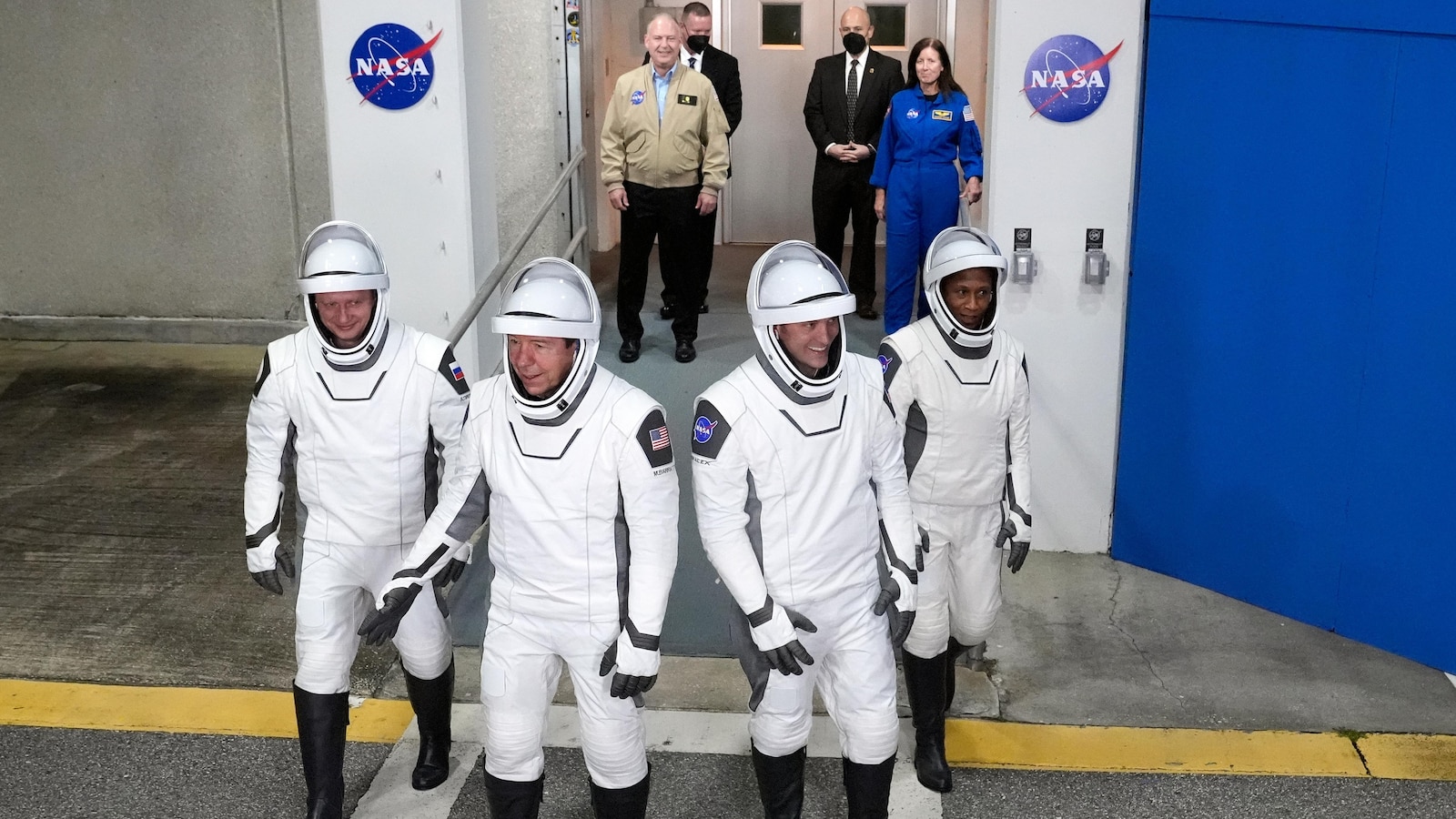
CAPE CANAVERAL, Fla. — Four astronauts headed to the International Space Station on Sunday where they will oversee the arrivals of two new rocketships during their half-year stint.
SpaceX’s Falcon rocket blasted off from Kennedy Space Center, carrying NASA’s Matthew Dominick, Michael Barratt and Jeanette Epps and Russia’s Alexander Grebenkin.
The astronauts should reach the orbiting lab on Tuesday. They will replace a crew from the U.S., Denmark, Japan and Russia, who have been there since August.
“When are you getting here already?” space station commander Andreas Mogensen asked via X, formerly Twitter, after three days of delay due to high wind. SpaceX Launch Control termed it “fashionably late.”
There was almost another postponement Sunday night. A small crack in the seal of the SpaceX capsule’s hatch prompted a last-minute flurry of reviews, but it was deemed safe for the whole mission.
The new crew’s six-month stay includes the arrival of two rocketships ordered by NASA. Boeing’s new Starliner capsule with test pilots is due in late April. A month or two later, Sierra Space’s Dream Chaser, a mini shuttle, should arrive. It is for delivering cargo to the station, but not passengers yet.
Epps was originally assigned to fly Boeing’s Starliner, which got bogged down with problems and stalled. NASA finally switched her to SpaceX.
“I am in a New York state of mind right now, it is amazing,” she said upon reaching orbit, referring to the Billy Joel song.
Epps, who is from Syracuse, N.Y., is the second Black woman assigned to a long station mission. She said before the flight that she is especially proud to be a role model for Black girls, demonstrating that spaceflight “is an option for them, that this is not just for other people.”
An engineer, she worked for Ford Motor Co. and the CIA before becoming an astronaut in 2009. Epps should have launched to the space station on a Russian rocket in 2018, but was replaced for reasons never publicly disclosed.
Also new to space are Dominick, a Navy pilot, and Grebenkin, a former Russian military officer.
Barratt, a doctor on his third mission, is the oldest full-time astronaut to fly in space. He turns 65 in April.
“It’s kind of like a roller coaster ride with a bunch of really excited teenagers,” Barratt said after reaching orbit. As for his age, he said before the flight, “As long as we stay healthy and fit and engaged, we’re good to fly.”
Flight controllers are monitoring a growing cabin leak on Russia’s side of the space station. The leak has doubled in size in the past few weeks and the area has been sealed off, NASA program manager Joel Montalbano said. He stressed there is no impact to station operations or crew safety.
___
The Associated Press Health and Science Department receives support from the Howard Hughes Medical Institute’s Science and Educational Media Group. The AP is solely responsible for all content.
Four astronauts are set to embark on a six-month mission to the International Space Station (ISS), marking another milestone in human space exploration. The crew, consisting of two Americans, one Russian, and one Japanese astronaut, will launch from the Baikonur Cosmodrome in Kazakhstan aboard a Soyuz spacecraft.
The mission, known as Expedition 65, will see the crew living and working aboard the ISS for an extended period of time. During their six-month stay, the astronauts will conduct a variety of scientific experiments and research projects in the fields of biology, physics, and materials science. They will also perform maintenance tasks on the station to ensure its continued operation.
Living in space presents a unique set of challenges for astronauts, including the effects of microgravity on the human body. To combat muscle and bone loss, the crew will engage in daily exercise routines using specialized equipment onboard the ISS. They will also follow a strict schedule that includes work, exercise, and leisure time to maintain their physical and mental well-being.
Communication with mission control on Earth is crucial for the success of the mission. The crew will stay in constant contact with ground control teams to receive updates on their schedule, perform experiments, and troubleshoot any issues that may arise. They will also have regular video conferences with their families and loved ones to stay connected during their time in space.
In addition to their scientific work, the astronauts will also have the opportunity to witness breathtaking views of Earth from the windows of the ISS. They will experience sunrises and sunsets every 90 minutes as the station orbits the planet at a speed of over 17,000 miles per hour.
As the crew settles into their new home in space, they will rely on each other for support and camaraderie. Living in close quarters for an extended period of time can be challenging, but the astronauts are trained to work together as a team and overcome any obstacles that may arise.
Overall, the six-month mission to the International Space Station represents a significant step forward in human space exploration. The crew will contribute valuable scientific data to our understanding of the universe and pave the way for future missions to explore even further into the cosmos.


